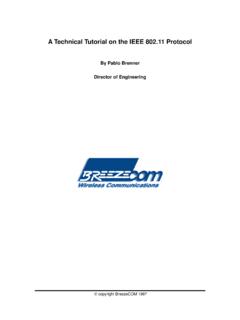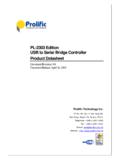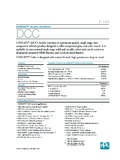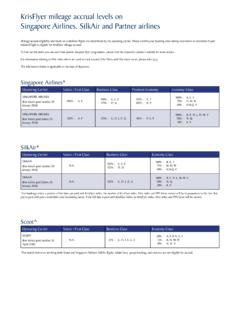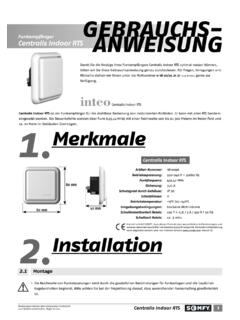Transcription of tech sheet reflow profiling - advprecision
1 AIM Tech- sheet reflow profiling Introduction The issue of reflow profiling has been and continues to be a hot topic. Questions ranging from Why Profile? to How To Profile? to How Can I Better Profile? continue to exist. However, the pains often associated with profiling can be reduced greatly if certain guidelines are followed and if there is a strong understanding of the variables that can be encountered during the reflow process. This paper shall discuss the appropriate guidelines for reflow profiling , and in particular shall focus upon the advantages of newer-style reflow ovens and the benefits of implementing the linear ramp-to-spike profile.
2 Delta (?) T. Many older-style ovens were prone to heating different parts of an assembly at varying rates, often depending upon the color and texture of the parts and substrates being reflowed. Thus, some areas of an assembly heated could reach much higher temperatures than other areas. This variation of temperature is referred to as the ? T (Delta T) of an assembly. The result of a large ? T is that, unless eliminated, certain areas of an assembly may receive excessive heat, while other areas may receive insufficient heat. This could cause a variety of solder defects, ranging from solder balling to non-wetting to damaged devices to charred residues.
3 reflow Ovens: New and Improved Most newer-style reflow ovens, known as the forced convection type, provide heat by circulating heated air on and around assemblies. One of the advantages of this type of oven is that these are able to provide heat to an assembly in a more controlled manner, exclusive of part color or texture. Although the absorption of this heat may vary due to the varying thickness and component population of an assembly, newer style ovens often are able to apply heat to assemblies in such a manner so that the ?T is not significant. In addition, the maximum temperature and rate of rise of a given profile can be controlled more readily with these ovens.
4 That is, these ovens offer greater zone to zone stability, which provides the operators of these ovens with a more controlled reflow process. Soaking: Why and When The intended result of the soak is to bring the temperature of the assembly to equilibrium before the assembly reaches the reflow temperature of the solder so that tombstoning due to thermal mismatch, thermal shock, etc are avoided. However, because assemblies reflowed in a more efficient or larger oven often are at a virtual equilibrium of temperature throughout the profile, the soak zone can become an unnecessary step. Therefore, because the soak zone is unneeded, the profile may be altered into a linear (Ramp-to-Spike) profile.
5 It is important to note that the soak zone generally is not needed to activate the flux chemistry of solder paste. This is a common misperception in the industry. Most solder paste chemistries used today will demonstrate adequate wetting activity when processed in a linear RTS profile. In fact, as is discussed later in this paper, using the RTS profile generally will improve wetting. Ramp-Soak-Spike 1. The RSS profile may be used with all chemistries, but often is not recommended for use with water soluble chemistries, as the soak zone of the typical RSS profile may break down the activators of the paste prematurely and result in less-than-adequate wetting.
6 As stated above, the purpose of using the RSS profile is to allow sufficient time for assemblies to reach an equilibrium of temperature prior to reflow . As seen above, the RSS profile begins with a steep ramp up to approximately 150 C. within a target time of 90 seconds at a maximum rate of rise of 2-3 C/second. Following the ramp area, the profile soaks the PCB assembly between 150-170 C within a target time of 90 seconds; the assembly should achieve thermal equilibrium by the completion of the soak zone. After the soak, the assembly will enter the spike area, where the assembly will be reflowed above 183 C for a target time of 60 seconds, plus/minus 15.
7 Seconds. When soldering to HASL coated parts, the entire profile should last between 3 to 4. minutes from 45 C to a peak temperature of 215 C 5 C. The cool down rate of the profile should be controlled within 4 C/second. In general, a faster cool down rate will result in a finer grain structure and a stronger and shinier solder joint. However, exceeding 4 C/second could result in thermal shock to the assembly. Ramp-to-Spike The RTS profile may be used with any chemistry or alloy, and is preferred for use with water soluble solder pastes and difficult-to-solder alloys and parts. If for any reason a large ?
8 T exists on the assembly, such as with processes using fixturization very large or thick PCBs or those using a less efficient reflow oven, the RTS may not be the appropriate choice of profile. The RTS profile has several advantages over the RSS profile. The RTS profile generally will result in brighter and shinier joints and fewer problems concerning solderability, since the solder paste reflowed in a RTS profile will still maintain its flux vehicle throughout the entirety of the preheat stage. This also will promote better wetting, and thus the RTS should be used on difficult-to-wet alloys and parts.
9 Because the ramp rate of the RTS profile is so controlled, there is much less concern of solder defects or thermal shock to the assembly resulting from too high a ramp rate. In addition, the RTS profile is more economical due to the reduced heating energy used in the first half of the oven. Furthermore, troubleshooting the RTS tends to be a relatively simple process, and operators with experience troubleshooting the RSS profile should have no difficulty in adjusting the RTS profile in order to achieve optimum profiling results. As seen below, the RTS profile is simply a gradual linear ramp from amb ient to peak temperature.
10 The ramp zone of the RTS profile serves as the preheat zone for the assembly, wherein the flux is activated, the volatiles are driven off, the assembly is prepared for reflow , and thermal shock is prevented. The typical ramp rate for a RSS. profile is C/second. The first 90 seconds of the ramp should be kept as linear as possible. A simple rule of thumb for the ramp rate of the RTS profile is that 2/3 of the profile should be below 150 C. After this temperature, the activation systems of most solder pastes begin to break down quickly. Therefore, keeping the front end of the profile cool will preserve the life of the activator longer, resulting in better wetting and shinier solder joints.

